This article was co-authored by Tu Anh Vu, DMD. Dr. Tu Anh Vu is a board certified dentist who runs her private practice, Tu's Dental, in Brooklyn, New York. Dr. Vu helps adults and kids of all ages get over their anxiety with dental phobia. Dr. Vu has conducted research related to finding the cure for Kaposi Sarcoma cancer and has presented her research at the Hinman Meeting in Memphis. She received her undergraduate degree from Bryn Mawr College and a DMD from the University of Pennsylvania School of Dental Medicine.
There are 16 references cited in this article, which can be found at the bottom of the page.
This article has been viewed 97,718 times.
If you think you might have a dental cavity, it is important that you get to a dentist right away. The earlier your treatment takes place, the faster you will recover. However, a lot of people have fears of the dentist, keeping them from getting proper dental care. Luckily, there are steps you can take to be prepared to handle your dental filling.
Steps
Getting the Diagnosis
-
1Go to the dentist twice a year. Sometimes cavities can develop without causing any noticeable symptoms. It is important that you get regular dental care to prevent cavities from forming, and to catch cavities early on if they do develop.[1]
-
2Know the signs of a cavity. If you experience toothache, tooth discoloration or staining, notice any holes or cracks, or have a new sensitivity to heat and cold, you might have a cavity. Schedule a dental appointment right away to make sure that the cavity does not worsen.[2]Advertisement
-
3Decide the course of treatment. If a cavity is caught very early, it is possible for it to be treated with fluoride. If a cavity has progressed terribly, it is possible that you will need a tooth extraction or a root canal. Most likely, however, your dentist will decide that you require a filling and will ask you to come back in the coming days or weeks to get a filling.
Scheduling the Filling Appointment
-
1Ask the right questions. As you prepare to schedule your filling, you will likely need to know how long the appointment is expected to last, whether or not you will have restrictions immediately following your appointment, whether you are permitted to take medications, whether you will need a ride home, any side effects you should know about, and how you should follow up. Having this information on hand well before your filling will allow you to make the necessary preparations at home. For example, you might need to:
- Ask a friend or a taxi service to set up a ride home, depending on what anesthetic will be used.
- Purchase soft, lukewarm foods that won't aggravate your filling in the days immediately following your appointment.
- Arrange for time off of work to go to your appointment and recover. Note that it might be hard for you to talk normally for a few hours after you get your cavity filled. If your job requires that you speak publicly, you might want to take an extra few hours off.
- Consult with your physician about whether your medications might interact with your dental anesthetic.
-
2Talk to your dentist about your medical history. Your dentist will have to know about any chronic health problems you have, your medical history, your current medications, allergies to medicines and metals, and whether or not you are pregnant. This information is essential for your dentist to make the right decisions about your dental care. Be sure to answer all questions honestly, and tell your dentist all the relevant details about your dental and physical health.
-
3Decide what kind of filling you should get. Most people have the option of getting an amalgam filling or a composite filling. There are pros and cons to each kind of filling, and the most appropriate option might depend on which tooth requires a filling and how deep your cavity is.[3]
- An amalgam filling is made up of metals, is silver in color, is usually the cheaper option, is strong and flexible, and sometimes requires the removal of healthy tooth material.[4] Amalgam fillings are more common on the back teeth.[5]
- A composite filling is made up of a hardened resin, is often tooth-colored, is usually the more expensive option, is not quite as strong or long-lasting as an amalgam filling, and is a bit fussier to do correctly.[6] Composite fillings are more common on teeth that are in the front of the mouth and visible.[7]
-
4Schedule an appointment as soon as you can. You do not want your tooth to be injured or your pain to worsen. Try to get in for your filling as soon as you can after your diagnosis.
-
5If you are a nervous patient, ask about having a morning appointment. Anxious patients do better when they don't have as much time during the day to fret about an upcoming appointment. Try to get it over with first thing in the morning if you have any dental fears or phobias.[8]
Figuring Out the Finances
-
1Research the costs of a filling. Costs can vary quite a bit. They depend on factors such as your location, the individual dentist, whether you are getting an amalgam or composite filling, and whether or not you have dental insurance.[9] In general, you can expect an amalgam filling to cost between $100-200 and a composite filling to cost between $135-240.[10]
-
2Double-check your dental insurance coverage. Even if you have had previous fillings covered by your dental plan, always double-check what exactly your dental insurance will cover. Sometimes there are restrictions about what kind of filling you can get--some plans might cover an amalgam filling but not a composite filling, for example. Make extra sure that the dentist performing your filling is in-network so that you aren't surprised by out-of-network surcharges. Be prepared for possible co-pays, however.
-
3Look for low-cost dental care providers. If you do not have dental insurance, you may have to pay out-of-pocket for dental care. If you qualify, consider looking for governmental assistance through Medicaid, CHIP, or other national health services.[11] Other possibilities for lower-cost dental care include dental schools, and reduced-cost dental programs through your state or municipality.[12]
Getting Over Your Fears
-
1Come to terms with your dental fears. If you are scared of the dentist, you are not alone. At least 5% of people avoid the dentist because of fear, and many more than that experience anxiety about the dentist.[13] While it is important to your health to see a dentist regularly, do not be embarrassed by your fear. Instead try to face it.
-
2Determine what the root cause of your dental fear might be. Some people are embarrassed by how their teeth look; other people fear possible pain; others have a phobia of needles; others don't like the sound of a dental drill.[14] Try to think about where your anxiety is coming from so that you can minimize it during your appointment. Many of these fears can be alleviated through the use of new technologies, good communication from your dentist, relaxation techniques, and alternative medications.
-
3Find a dentist who is comfortable with anxious patients. Many dentists have training in how to treat patients with dental anxieties and fears. Don't hesitate to ask your dentist directly about whether he or she can handle fearful patients.[15] It might take you a few tries to find a good fit, but you should call around or even find recommendations through friends or the internet. There will be a good dentist who can help you. Some ways that dentists can soothe an anxious patient include:[16]
- Using water-based tools that minimize feelings of heat or vibration.
- Using oral or rub-on anesthetics before to provide pain relief before you receive a numbing shot.
- Having the option of nitrous oxide (laughing gas) available.
- Creating a spa-like environment, with relaxing music, aromatherapy, and a calm space.
- Providing noise-canceling headphones so that you do not have to hear the noise of the drill.
- Knowing relaxation and hypnosis techniques to help guide your breathing to keep you calm.[17]
- Telling the patient what will happen so that the patient feels in control and safe.
-
4Research sedative dentistry. If you have a crippling anxiety of the dentist, you might want to look into the possibility of having your cavity filled while you are sedated. There are some extra risks from this option, and not every dentist uses sedative dentistry. However, there are many who will use sedatives to calm down a fearful patient.[18]
- Be sure that you arrange for a friend or a taxi driver to take you home after the procedure. It is not safe to drive after waking up from sedation.[19]
-
5Do not self-medicate. While it might be tempting for you to use calming substances such as anti-anxiety medication or alcohol, you do not want to ingest anything that might interact poorly with dental anesthetics.[20] Always talk to your dentist first about appropriate steps you can take to minimize your anxiety during a filling.
-
6Tell yourself that dentistry is better now than it has ever been. Some people have dental fears because of bad experiences long ago. However, dentistry is much more sophisticated now. Anesthetics are more effective, drills are quieter, and there is a lot of new technology that can help a patient remain more comfortable. Try to keep an open mind about the dentist, and talk to your dentist about the tools that he or she uses.[21]
-
7Practice relaxation techniques to use during your appointment. Keeping yourself distracted is a great way to ensure that you remain calm during your filling.[22] There are a variety of techniques that you can use and discuss with your dentist. For example, you could:
- Prepare a soundtrack of your favorite relaxing music that you could listen to during the procedure.
- Memorize a poem or a mantra that you can recite mentally to keep yourself distracted.
- Use deep breathing techniques to minimize anxiety. It might be hard to do these with your mouth open, but some relaxing breathing techniques are still possible, such as breathing in through your nose for five seconds, holding for five seconds, and releasing for five seconds.[23]
- Ask if you could have your filling done in a room with a television or screen with distracting or relaxing images.
-
8Ask if you can have a friend with you. Having a friend or family member present can help keep you calm if you have trouble in the dentist's chair. Ask your dentist if she is comfortable with you having a loved one in the room with you to keep you grounded and to make sure that you are all right during the filling procedure.
Preparing Your Child for a Filling
-
1
-
2Decide whether or not your child even needs a cavity filled. If the cavity is in a baby tooth that will soon fall out, perhaps your child does not even require a filling. If the tooth is several years away from falling out, or if the filling is in an adult tooth, your child will likely need a filling.[26]
-
3Talk to your dentist about anesthetic options, especially for multiple fillings. Some children do better when all their cavities are filled at once. Other children might do better with several appointments for fillings spaced out over time. Discuss with your dentist what the painkiller and sedative options are for these appointments in order to find the best option for your child.[27] These options might involve laughing gas, an oral sedative, or the same kind of local anesthetic that you get for your own fillings.[28]
-
4Use simple words to describe the procedure. Be honest with your child about what a filling entails, but use simple and non-scary words to explain what will happen.[29] For example, you could tell her:
- "Your tooth has an owie, and a filling will make it feel good and strong. You might feel very sleepy while you are getting the filling, but you will feel a lot healthier afterwards."
- "A filling means that your tooth will be fixed. Sometimes people get scared, but dentists do this all the time, and you'll get medicine so that you feel better."
- Avoid words like "pain" or "hurt."
-
5Prepare your child for numbness. Some children feel anxious about the numb feelings of oral anesthetic. Sometimes they might engage in dangerous behaviors while numb, such as biting their lips, pinching their gums, or scratching at their mouths. Watch your child carefully to make sure that she is behaving safely, and tell her that what she is experiencing is normal and will be over soon.[30]
-
6Be present during the procedure. Having a loved one there in the room can be very helpful to someone who is nervous or scared of the dentist.
-
7Give your child some control. Let your child choose what he or she will wear to the appointment. If your dentist will let your child hold a toy, let your child choose what toy to bring. This will help your child feel in control of the situation and will help reduce possible fears.[31]
-
8Plan something fun for after the appointment. Tell your child that you have a special treat in store once your child has recovered from the filling. Maybe you can go see a movie, or go out for ice cream, or go to the zoo. Tell your child in advance of the appointment so that he has something to look forward to for being brave.[32]
Taking Care of Yourself After the Filling Appointment
-
1Know what to expect immediately after your appointment. Depending on what kind of anesthetic was used, you might experience different odd sensations after your appointment. You might feel numb, tingly, and tender in the hours immediately following a filling. You might also have trouble eating, talking, or swallowing for a few hours. While these sensations might feel bizarre, they are totally normal.
- Be especially careful about chewing or talking while you are still numb. You might accidentally bite your cheek or your tongue. Pay close attention to the health of your mouth, even if you cannot feel any pain at the moment.
-
2Pay attention to your filling. Some pain and sensitivity is normal for a few days. If you continue to experience sensitivity while biting or chewing, however, that is an indication that your filling was built a little too high and might need to be filed down for your comfort. Talk to your dentist about coming back again for a quick fix.[33]
-
3Follow your dentist's recommendations. Your dentist might want to check up on you in the days and weeks following your filling to make sure everything is progressing normally. Keep your appointments and follow your dentist's instructions about diet, medication, and hygiene.
- For example, your dentist might recommend that you stay away from extremely hot, extremely cold, or sugary foods and drinks as you heal. You might also be asked to brush your teeth more often or to use special mouthwashes to keep your mouth clean as your filling sets. Follow all instructions carefully to make sure you don't run into any complications.
-
4Watch out for warning signs. While complications from dental fillings are rare, they can occur. Pay attention to warning signs such as bleeding, wheezing, excessive pain, fever, infection, and swelling. Call your dentist immediately if you experience these symptoms.
-
5See your dentist twice a year. Your dentist will be able to monitor your filling to make sure that it remains intact and that it is still doing its job properly. Sometimes fillings need to be replaced, and you will want to catch any issues with your filling as early as possible. Keep up with your dental appointments so that you can keep an eye on any potential filling replacements.[34]
Expert Q&A
-
QuestionHow do you treat a cavity at home?
 Tu Anh Vu, DMDDr. Tu Anh Vu is a board certified dentist who runs her private practice, Tu's Dental, in Brooklyn, New York. Dr. Vu helps adults and kids of all ages get over their anxiety with dental phobia. Dr. Vu has conducted research related to finding the cure for Kaposi Sarcoma cancer and has presented her research at the Hinman Meeting in Memphis. She received her undergraduate degree from Bryn Mawr College and a DMD from the University of Pennsylvania School of Dental Medicine.
Tu Anh Vu, DMDDr. Tu Anh Vu is a board certified dentist who runs her private practice, Tu's Dental, in Brooklyn, New York. Dr. Vu helps adults and kids of all ages get over their anxiety with dental phobia. Dr. Vu has conducted research related to finding the cure for Kaposi Sarcoma cancer and has presented her research at the Hinman Meeting in Memphis. She received her undergraduate degree from Bryn Mawr College and a DMD from the University of Pennsylvania School of Dental Medicine.
Board Certified Dentist This isn't the kind of thing you can do on your own. You're going to need to contact your dentist and schedule an appointment to get this kind of issue fixed. You can take Tylenol or ibuprofen if you need to relieve the pain, but this is only going to temporarily solve your problem. Don't worry, though. Getting a cavity filled is an extremely common procedure!
This isn't the kind of thing you can do on your own. You're going to need to contact your dentist and schedule an appointment to get this kind of issue fixed. You can take Tylenol or ibuprofen if you need to relieve the pain, but this is only going to temporarily solve your problem. Don't worry, though. Getting a cavity filled is an extremely common procedure!
Warnings
- Don't skip brushing your teeth, as this will lead to tooth rot and possible complications.⧼thumbs_response⧽
- Be sure your dentist is properly licensed, and beware of anyone who practices "holistic" dentistry. If you need a filling, you need a filling; there are no effective alternatives to treat a cavity.[35]⧼thumbs_response⧽
References
- ↑ Tu Anh Vu, DMD. Board Certified Dentist. Expert Interview. 10 April 2020.
- ↑ https://www.nhs.uk/conditions/tooth-decay/
- ↑ http://www.dentalfearcentral.org/faq/fillings/
- ↑ http://www.dentalfearcentral.org/faq/fillings/
- ↑ https://www.dentalhealth.org/tell-me-about/topic/sundry/different-filling-materials
- ↑ http://www.dentalfearcentral.org/faq/fillings/
- ↑ https://www.dentalhealth.org/tell-me-about/topic/sundry/different-filling-materials
- ↑ http://psychcentral.com/library/phobia_dentist.htm
- ↑ http://www.yourdentistryguide.com/fillings/
- ↑ http://www.yourdentistryguide.com/fillings/
- ↑ http://www.hhs.gov/answers/health-care/where-can-i-find-low-cost-dental-care/index.html
- ↑ http://www.hhs.gov/answers/health-care/where-can-i-find-low-cost-dental-care/index.html
- ↑ http://www.dentalfearcentral.org/fears/dental-phobia/
- ↑ http://www.dentalfearcentral.org/fears/dental-phobia/
- ↑ http://www.webmd.com/oral-health/features/4-steps-to-a-pain-free-dentist-visit
- ↑ http://www.webmd.com/oral-health/features/4-steps-to-a-pain-free-dentist-visit?page=2
- ↑ http://www.dentalfearcentral.org/help/psychology/
- ↑ http://www.yourdentistryguide.com/fillings/
- ↑ http://www.yourdentistryguide.com/fillings/
- ↑ http://www.webmd.com/oral-health/features/4-steps-to-a-pain-free-dentist-visit?page=2
- ↑ http://www.dentalfearcentral.org/help/
- ↑ http://www.everydayhealth.com/dental-health/you-and-your-dentist/dental-anxiety.aspx
- ↑ http://psychcentral.com/library/phobia_dentist.htm
- ↑ http://www.dentalfearcentral.org/fears/dental-phobia/
- ↑ http://www.todaysparent.com/kids/school-age/heres-the-drill-your-childs-first-filling/
- ↑ http://www.todaysparent.com/kids/school-age/heres-the-drill-your-childs-first-filling/
- ↑ http://www.todaysparent.com/kids/school-age/heres-the-drill-your-childs-first-filling/
- ↑ http://www.todaysparent.com/kids/school-age/heres-the-drill-your-childs-first-filling/
- ↑ http://www.denverpost.com/ci_16363204
- ↑ http://www.todaysparent.com/kids/school-age/heres-the-drill-your-childs-first-filling/
- ↑ http://www.denverpost.com/ci_16363204
- ↑ http://www.denverpost.com/ci_16363204
- ↑ http://www.dentalfearcentral.org/faq/fillings/
- ↑ Tu Anh Vu, DMD. Board Certified Dentist. Expert Interview. 10 April 2020.
- ↑ http://www.dentalfearcentral.org/help/find-a-dentist/
About This Article
Getting a cavity filling can be uncomfortable, but if you prepare properly, you’ll have less to worry about. Try to schedule an appointment as soon as possible to prevent the cavity from getting worse. If you’re anxious about the procedure, ask for a morning appointment so you’ll have less time during the day to stress about it. You should also check your dental insurance to see how much you’ll have to pay on the day. It’s natural to be nervous when you go for your filling, but try breathing deeply or listening to music through one earphone to help you relax. You can also let your dentist know you’re anxious so they can be considerate of your feelings. Keep in mind that you might have trouble eating for a few hours after the procedure. For more tips, including how to prepare your child for a filling, read on.


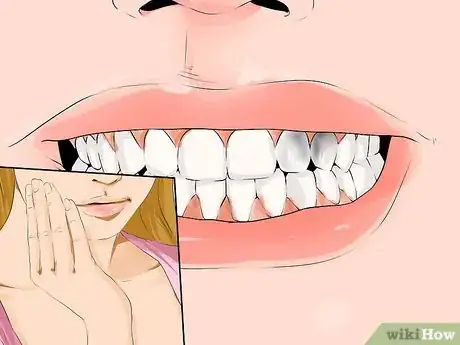



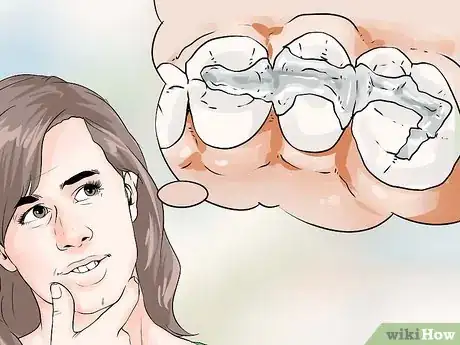
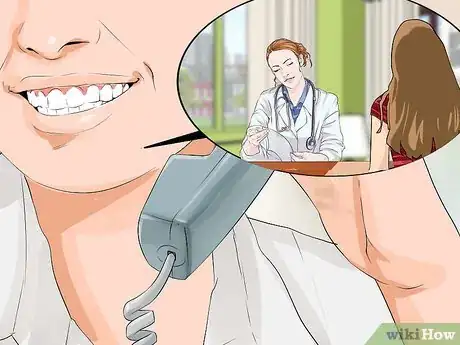
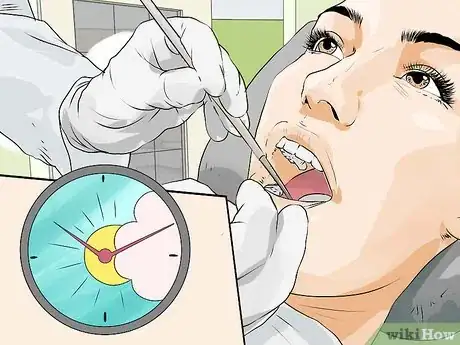
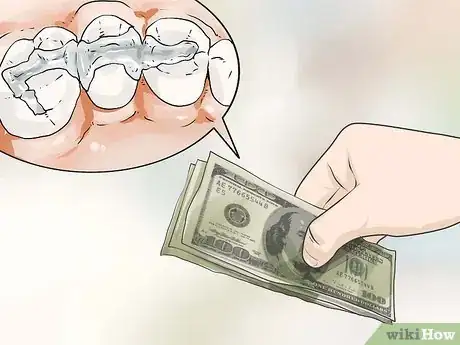

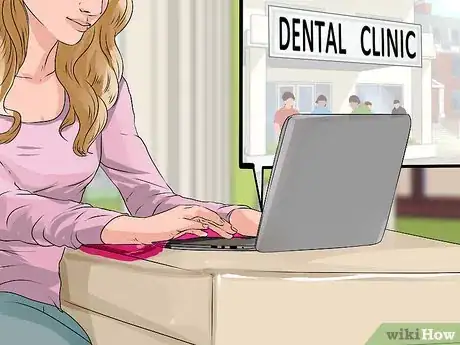


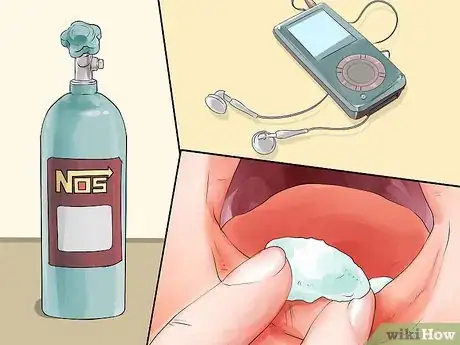


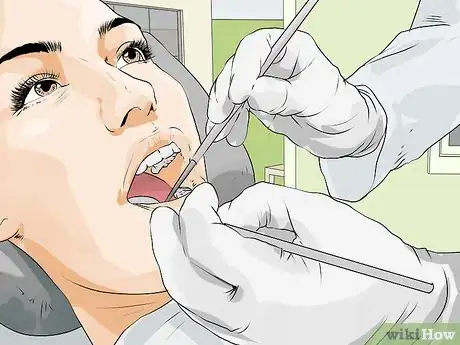

















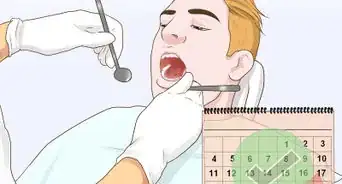



















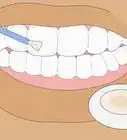

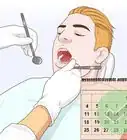




































Medical Disclaimer
The content of this article is not intended to be a substitute for professional medical advice, examination, diagnosis, or treatment. You should always contact your doctor or other qualified healthcare professional before starting, changing, or stopping any kind of health treatment.
Read More...